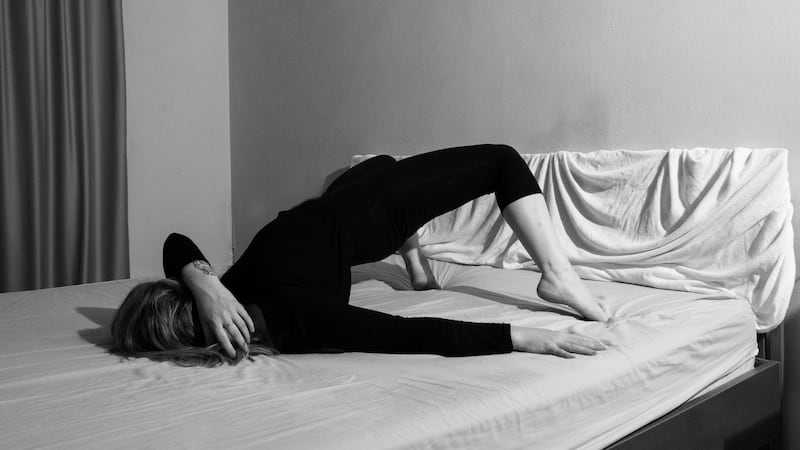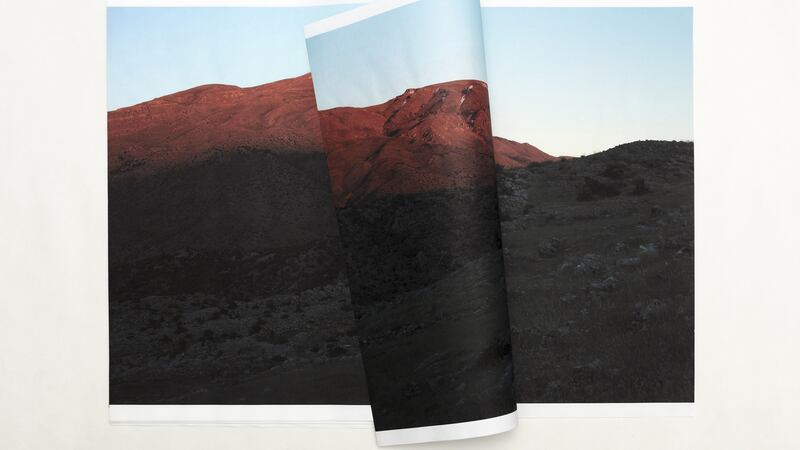The centrepiece of the 10th anniversary of the PhotoIreland Festival is definitely the advent of the Museum of Contemporary Photography of Ireland.
If the existence of such a museum takes you by surprise, don’t feel you’ve been missing out. It is a pop-up museum, located in the Print Works at Dublin Castle, courtesy of the Office of Public Works, and it will be there throughout the month of July, from July 4th.
The museum has been an aspiration of the PhotoIreland Festival pretty much from the beginning. The fact that the museum’s incarnation is temporary doesn’t mean it’s a consolation prize for the absence of a permanent space, PhotoIreland’s artistic director Ángel Luis González Fernández is keen to emphasise. In fact, the entire programme for the month underlines the speculative, propositional nature of the project. The museum’s title could and perhaps should be followed by a question mark.
Photography felt like a little sister of the arts in Ireland
As he sees it: “We don’t need a museum of contemporary photography of Ireland in the sense that we usually think of museums.” That is, the 19th and 20th century conception “of making a building and then that’s where you keep all this stuff – a collection”. Like so much else, he suggests that “structure that exists in our head” has been destabilised, largely if not exclusively by recent digital communications technologies. But then, the canonical notion of permanence we associate with the word “museum” is more contingent and recent than you might expect. The permanence was always temporary.
Two years after graduating in photography at the then Dublin Institute of Technology, González Fernández, who is Spanish, began PhotoIreland, largely driven by his feeling that “photography felt like a little sister of the arts in Ireland”, particularly in terms of attitudes to photography, which seemed to him limited and conservative. The festival was a logical development in that a month-long concentration on photography should help to create a space to encourage and amplify discussion.

With a restless, quicksilver temperament (in conversation he continually, sometimes dizzyingly, leaps from one subject to another without missing a beat), González Fernández is an evangelical proponent of photography as a medium, naturally adept at making connections and seeing possibilities and, crucially, exceptionally undogmatic when it comes to what photography is or should be. Rather, his apparent inclination is the deeply democratic idea of seeing what people make of photography and giving them the chance to do so.
There’s a one-day symposium on July 5th, Photography and the Museum, designed to map out the current state of play as regards the photograph and the museum. Contributors include photo-historian Eléonore Challine, “who has explored cases of failed photo-museums – projects that did not work out for one reason or another”, Alison Nordström, curator at George Eastman House “she oversaw the digitalisation of the collection” and curator Marco De Mutiis, whose online projects “figure out alternative ways of exhibiting work”.

Not that González Fernández is averse to collections. PhotoIreland’s Library Project (normally based in Temple Bar) is a collection-cum-reference library of, mostly, art photography books, and will have a presence in the pop-up museum in the form of a book and magazine fair (on stage in the main space), “with many new books from invited artists and publishers”. Plus there is a bookshop in what is usually the building’s cloakroom.
As regards the exhibitions, the largest is probably New Irish Works 2019, featuring projects by 10 Irish (or Irish-based) photographic artists, selected by a nine-person independent panel. The range is considerable. Jamin Keogh’s A Constant Parameter is a visual meditation on the idea and the reality of the horizon. George Voronov visited religious communities and retreats to explore young people’s engagement with spirituality in contemporary Ireland. Róisín White (who has work in two shows) offers an imaginative investigation of The Rest Cure, a form of treatment routinely prescribed for women a century and more back as, essentially, a means of neutralising and controlling them.
Personal memoir comes into Dorje de Burgh’s Dream the End, an excavation of his family’s visual archive and his relationship with his mother. With the air of a Victorian amateur naturalist, Zoe Hamill documents the landscape of her childhood. Robert Ellis too deals with memory in a way, evoking contemporary Uganda at a distance. Phelim Hoey creates a visual account of the experience of Multiple Sclerosis. Sarah Flynn Uinse takes a conceptual approach to the phenomenon of ash dieback. Aisling McCoy considers Berlin’s former Templehof airport as a “non space” in recent history and Cian Burke’s photographs are sculptural statements that recall the mid-20th century avant garde.
The first show you encounter in the museum is Parallel Platform with four participants. Curator Seda Yildiz aims to elucidate the contemporary production, circulation and consumption of photographic imagery, foregrounding process over object and entailing participatory involvement.
In his work, ongoing since 2015 and presented in his exhibition The Mountain in a book-like form, Nadim Asfar, with almost hypnotic fascination, records the mountainous Lebanese landscape. It is as if Asfar is looking for clues to ancient and recent history in the very grain of the land.
Seven shortlisted artists, including the winner Seunggu Kim, are included in the Tokyo International Photography Competition exhibition. It is integral to González Fernández’s conception that visitors do not breeze in, walk briskly through and exit: “We’ve thought carefully about slowing people down.”
Not, it must be said, by placing obstacles in their way but by offering them spaces and facilities to pause, places to sit and linger, with ancillary material to look at and consider, including the museum’s television station, which screens a programme of interviews and artists’ videos.
Photography and the Museum is but one event in an extensive programme of talks and workshops in two dedicated rooms. Almost as an aside, González Fernández mentions the creation of a Wikimedia site, a kind of Wiki-PhotoIreland, which will incorporate a profile page for each Irish photographic artist. “When it is up and running it will be there as a resource. There is absolutely nothing like it in existence at present.”
The Museum of Contemporary Photography of Ireland, The Print Works, Dublin Castle, July 4th – July 28th, entry €5, free Mondays (photoireland.org)












